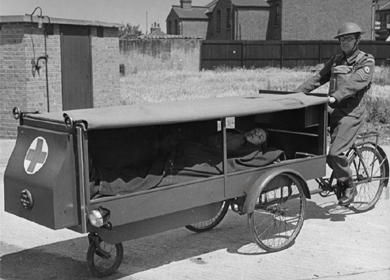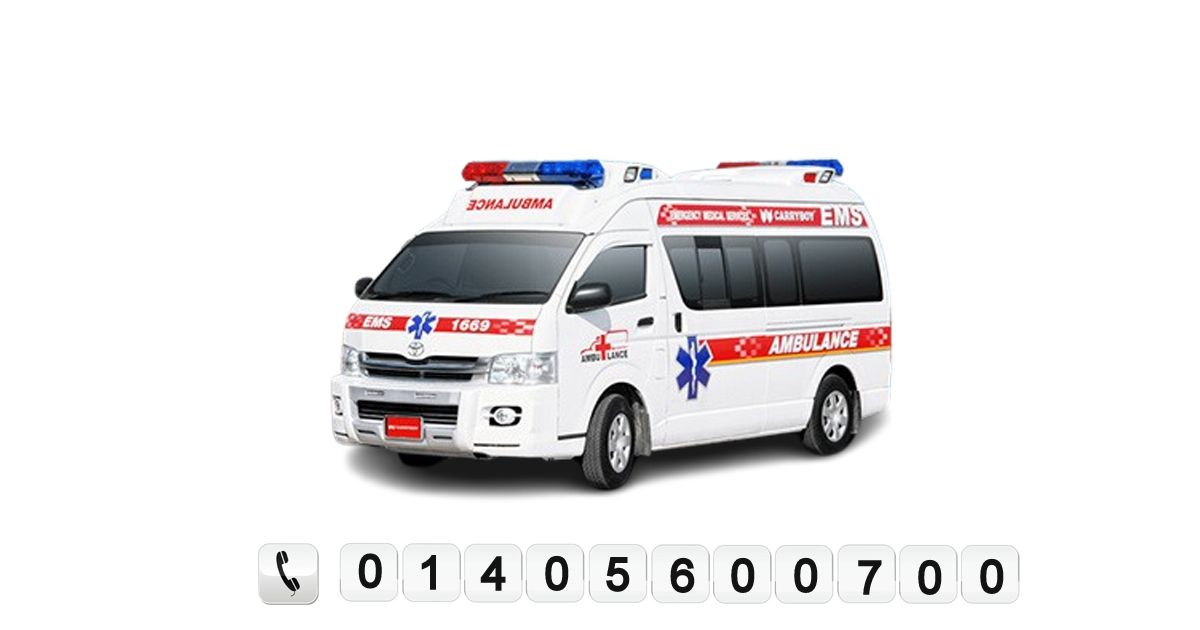On the Road to Saving Lives: A Comprehensive History of Ambulance Services
Ambulance services, those swift lifesaving vehicles that race through city streets and rural lanes, have become an integral part of modern healthcare systems. These essential vehicles are often the first responders to emergencies, providing critical care and transportation to those in need. But where did this noble profession and its iconic vehicles originate? In this journey through history, we will trace the evolution of ambulance services from their humble beginnings to the modern, technologically advanced units we rely on today.
The Ancient Origins:
The Middle Ages and Religious Aid:
Early Innovations and Horse-Drawn Ambulances:
Florence Nightingale and the Crimean War:
The Civil War and the Birth of Modern Ambulance Services:
The Ambulance Corps:
Motorized Ambulances:
World War I and the Red Cross:
The Emergence of Professional Ambulance Services:
World War II and the Expansion of Ambulance Services:
The Development of Paramedicine:
The Evolution of Ambulance Design:
EMS Systems and 911:
Air Ambulances and Helicopter EMS:
Technological Advancements:
Challenges and Future Directions:
Conclusion:
The Ambulance Service's Past
Ambulances are now a normal phenomenon in our daily lives, we call them whenever there is an emergency, but was it always so? Was the ambulance always there to save lives? Number emergency services, like everything else, have boom days.
Ambulances have been around for a long time and their history begins in ancient times. In 1487, Spanish troops used ambulances as emergency transport during the Siege of Malanga. This was the first recorded ambulance being used as an emergency transport service. At the time, the Spanish army was treated very well, but many soldiers died on the battlefield because they were taken to hospitals only after the battle had ended. Such scenarios tormented a man named Dominique Jean Lary.
Dominique Jean Lary took part in the fighting between the French and Prussian armies. His concern was that wounded soldiers would not be carried by numerous ambulances, as ambulances are not four-wheeled to begin with. Before 1766, ambulances were littered with more horses than they could hold wounded soldiers, and many died from lack of electricity.
So between 1766 and his 1842 there was a great change in the use of ambulances in combat, and this change was made by this man, Dominique his Jean Larry. He decided to build a new kind of ambulance system that doesn't ride on horse toilets.
He created an ambulance, a chariot on two or four wheels. These ambulances can now rescue wounded and fallen soldiers from active battlefields. Dominique Jean Larry later became Napoleon Bonaparte's personal physician.
During the American Civil War, Larry's work developed. Joseph Burns and Jonathan Letterman, his two Union Surgeons, created a pre-hospital care system for soldiers that ensured new transportation methods and technology. However, these ambulances had two wheels and were not very effective at carrying two or three wounded soldiers, so they were replaced by another type of ambulance with four wheels, called the "lacquer" ambulance. I was. At the time, lacquer ambulances were very common on the battlefield, taking wounded soldiers to proper treatment and care.
Auto ambulances were introduced in the 19th century, but before that all ambulances were horse-drawn carriages, large and small, but all these ambulances were always ready to save lives. The first hospital-based emergency medical service was based in a commercial hospital in Cincinnati, Ohio.
These ambulance services were created to get patients to the hospital faster and more conveniently. The service was started in his 1869 by Edward Dalton, a former Union Army surgeon. These ambulances were equipped with splints, stomach pumps, plasters and morphine, reflecting modern medicine.
In later years these ambulances also had hospital staff or crew on board, so the hospital hired two full-time emergency surgeons to devote themselves to these patients, and by 1869 there were ambulances with residency training. staffing has been fully established. These ambulances were slightly modified until the early 20th century. Then, in the early 20th century, automobile ambulances were introduced and used in conjunction with horse-drawn ambulances. Early automobile ambulances were used to run on steam, gasoline and electricity. The first mass-produced automobile ambulance was built in 1909 by James Cunningham in the United States.
During World War I, horse-drawn ambulances were phased out due to the success of automobile ambulances on the battlefield. The idea of an ambulance was also born during World War I, and the first custom-built ambulances were built in the late 1920s. But at that time, unlike modern times, they were intended only for fast transportation.
Modern emergency services are well developed and far more equipped than in the past. Now, ambulances are not only used for transportation, but also for getting patients to medical attention quickly so that they can get the appropriate treatment they need before they reach the specialists. increase.
There are now far more diverse ambulance services than there used to be, such as: B. ICU ambulances, ICU ambulances, non-AC or non-AC ambulances, refrigerated ambulances, ALS (Advanced Life Support) ambulances, and air ambulances. There are many variations of these air ambulances, currently one is a turboprop ambulance and the other is a jet. Helicopters are classified as turboprop rescue aircraft and are intended to travel short distances, while jet aircraft are intended to travel longer distances. Emergency services are now like pre-hospital care.
The EMS company's service is to provide an ambulance.
An ICU ambulance is needed when a patient is suffering from a life-threatening condition and needs urgent medical care. This is because normal ambulances are only used for transportation and cannot provide this kind of intensive care.
It should be ensured that the crew on board or medical technicians on board are adequately trained and experienced in such medical crises. They must ensure that the ambulances they provide and their medical staff treat patients with reasonable care and responsibility.
These companies also need to do their jobs very efficiently and provide their customers with the right information about everything in a limited amount of time. B. Information about the types of ambulances we offer and the prices for each.
From the outside, the ambulance looks like an ordinary minibus, but inside the ambulance the picture is very different. In an ambulance he has two compartments, one in the rear for the patient and caregiver and the other in the front for the ambulance driver. Ambulances have windows, but most of them are dirty for patient privacy.
In ambulances, depending on the patient's condition and the emergency medical services required, there are other large or small pieces of equipment that are required to be carried in the ambulance. B. The intensive care ambulance service has different equipment than the intensive care ambulance service.
These devices are there to make sure the patient is stable until they reach the hospital. Ambulances also have beds or stretchers for patients. These beds have wheels so the patient does not experience any inconvenience when moving from the ambulance to the hospital. Ambulances are also staffed by medical staff who are well-trained in handling critical to normal patients.
A common mistake in emergencies.
It's very easy to panic in an emergency and it's the first mistake we make.
Often times, a loved one is going through a crisis and we panic and wonder what to do, how to face the situation, or what to actually do in that moment of emergency. I can't fully comprehend what happened and I'm completely empty.
It does not analyze the situation to understand the next step to take. And make the following mistakes, failing to provide correct information, overlooking important details, and looking for the best hospitals even miles away. The key here is to stay calm during times like this so that we can make better decisions for our patients, but what is happening to emergency services, what is the patient's condition and symptoms? , or should tell you exactly how serious they are. so rescue companies can suggest or reference exactly what to do.
In addition, every minute is precious for patients, and the most important thing is to choose a hospital that is very close to them. Once the patient's condition is stabilized, you can switch to the hospital of your choice at any time.
We often lose people due to indecision because it takes too long to decide what to do. We need to be very calm in emergencies like this so that we can make quick and accurate decisions to save lives.
Information you need to provide to receive faster and more efficient rescue services.
When calling an ambulance, you must provide the ambulance with information. First, we need to inform you about the patient's condition. B. You should at least tell them how serious they are, what they're suffering from, and if you can't, at least tell them the symptoms so they can send you appropriate help.
Second, you should communicate your budget and affordability. Third, correct details or information must be provided to reduce inconvenience for both parties. Finally, the patient's exact whereabouts or address must be communicated so that the patient can be taken to the hospital as soon as possible.
All this information helps rescue companies understand the situation and send rescues faster and more efficiently.


